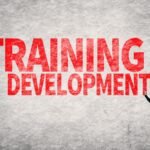Unleashing Potential: The Power of Leadership Development
In today’s rapidly changing business landscape, organizations face a constant need for effective leaders who can steer their teams towards success. Leadership development has emerged as a critical strategy for organizations to cultivate and nurture the next generation of leaders. In this blog, we will explore the importance of leadership development, its key components, and how it benefits both individuals and organizations. The Significance of Leadership Development: Leadership development goes beyond merely filling managerial positions; it focuses on identifying, grooming, and empowering individuals to take on leadership roles at all levels. By investing in leadership development, organizations create a pipeline of capable leaders who can drive growth, innovation, and positive change.
Key Components of Leadership Development: Self-Awareness: Effective leadership starts with self-awareness. Leadership development programs often begin with assessments and activities aimed at helping individuals understand their strengths, weaknesses, values, and leadership style.
Skill Development: Leadership skills can be learned and enhanced through targeted training programs. These may include communication, decision-making, problem-solving, emotional intelligence, and strategic thinking, among others.
Mentoring and Coaching: Mentoring and coaching programs provide aspiring leaders with guidance, support, and feedback from experienced professionals. These relationships foster personal growth, facilitate knowledge transfer, and accelerate leadership development.
Experiential Learning: Providing opportunities for leaders to take on challenging projects, lead cross-functional teams, or participate in simulations allows them to apply their skills and gain valuable experience in a safe environment.
Benefits for Individuals: Professional Growth: Leadership development offers individuals a chance to enhance their skills, expand their knowledge, and broaden their perspectives. This growth not only prepares them for leadership roles but also improves their overall professional effectiveness. b. Increased Confidence: As leaders develop their abilities and gain experience, their confidence grows. They become better equipped to handle complex challenges, make tough decisions, and inspire their teams. c. Career Advancement: Leadership development programs serve as a stepping stone for career advancement. Organizations often identify potential leaders from within and offer growth opportunities to those who demonstrate leadership potential.
Benefits for Organizations: Succession Planning: Leadership development programs ensure a steady supply of qualified leaders to fill key positions as the need arises. This proactive approach mitigates the risk of leadership gaps and fosters a smooth transition of leadership within the organization. b. Improved Performance: Effective leadership positively impacts employee engagement, productivity, and morale. When leaders are well-equipped and skilled, they can create high-performing teams, drive innovation, and deliver superior results. Enhanced Organizational Culture: Strong leaders play a crucial role in shaping the organizational culture. Leadership development helps instill shared values, encourages collaboration, and promotes a positive work environment.
Leadership development is a strategic investment that yields significant benefits for individuals and organizations alike. By nurturing and developing leaders, organizations can build a robust leadership pipeline, drive growth, and create a culture of excellence. As the business landscape continues to evolve, leadership development becomes an indispensable tool for organizations to stay ahead of the curve and unleash the potential within their workforce.


































